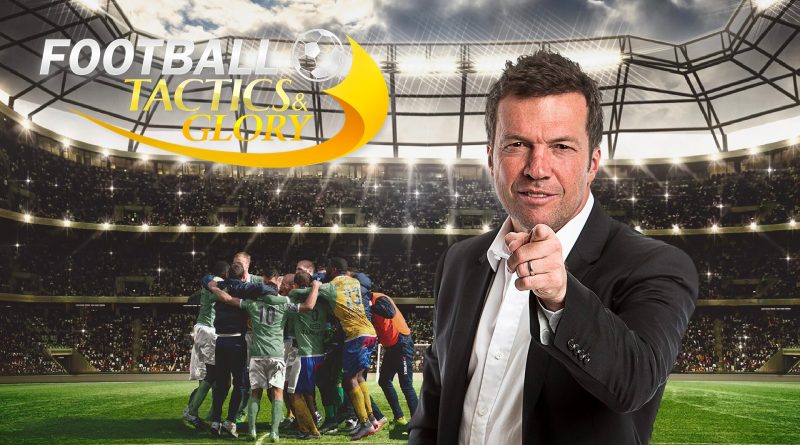Understanding Football Tactics A Beginner’s Guide 2024
Understanding Football Tactics: A Beginner’s Guide
Football is more than just a game of kicking a ball into a net. It is a sport rich in strategy and tactics, where teams employ various methods to outmaneuver their opponents and achieve victory. Whether you are a new fan or a player looking to enhance your understanding of the game, this guide will provide you with a comprehensive overview of football tactics.

1. Introduction to Football Tactics
Football tactics refer to the plans and strategies that teams use to win matches. These tactics can vary widely depending on the team’s philosophy, the players’ strengths and weaknesses, and the style of play the coach wants to implement. Understanding these tactics can greatly enhance your appreciation of the game.
2. Basic Formations Formations
are the starting point of any tactical setup. They determine how players are arranged on the pitch and can significantly influence a team’s style of play. Here are some common formations:
2.1 The 4-4-2 Formation
The 4-4-2 is one of the most traditional and widely used formations in football. It consists of four defenders, four midfielders, and two forwards. This formation is balanced and provides a solid defensive structure while allowing for effective attacking play.
2.2 The 4-3-3 Formation
The 4-3-3 formation is known for its attacking prowess. It features four defenders, three midfielders, and three forwards. This setup allows for dynamic wing play and quick transitions from defense to attack.
2.3 The 3-5-2 Formation
The 3-5-2 formation is a more modern and flexible approach. It includes three defenders, five midfielders, and two forwards. This formation can adapt to various situations during a match and provides numerical superiority in midfield.
3. Defensive Tactics Defensive tactics are crucial for preventing the opposition from scoring. Here are some key defensive strategies:
3.1 Pressing
Pressing involves putting immediate pressure on the opponent with the ball to force errors and regain possession. There are different types of pressing, such as high pressing (in the opponent’s half) and low pressing (in your own half).

3.2 Zonal Marking In
zonal marking, defenders cover specific areas of the pitch rather than marking individual opponents. This tactic ensures that there are no gaps in the defensive line and can effectively counteract teams with strong individual attackers.
3.3 Man-to-Man
Marking Man-to-man marking involves assigning each defender to a specific opponent. This tactic is useful for nullifying the threat of key players but can be risky if the opponents have superior dribbling skills.
4. Attacking Tactics
Attacking tactics aim to break down the opponent’s defense and create scoring opportunities. Here are some popular attacking strategies:
4.1 Counter-Attacking
Counter-attacking involves quickly transitioning from defense to attack after regaining possession. This tactic takes advantage of the opponent’s disorganization during their attacking play and can lead to swift and effective attacks.
4.2 Possession-Based Play
Possession-based play focuses on maintaining control of the ball and patiently building up attacks. Teams using this tactic prioritize short passes and movement to create openings in the opponent’s defense.
4.3 Wing Play
Wing play utilizes the width of the pitch to stretch the opponent’s defense. Wingers or full-backs deliver crosses into the box, aiming to create goal-scoring opportunities for strikers.

5. Set Pieces Set pieces are a vital aspect of football tactics, often leading to crucial goals. Here are some common set-piece strategies:
5.1 Free Kicks
Free kicks are awarded for fouls and can be direct (aimed at goal) or indirect (requiring a touch before a shot). Teams use various techniques, such as curling the ball over the wall or executing intricate passing moves.
5.2 Corner Kicks
Corner kicks are taken from the corners of the pitch and offer excellent scoring opportunities. Teams use different routines, such as near-post flick-ons, far-post headers, or short corners to create confusion in the opponent’s defense.
5.3 Penalties
Penalties are awarded for fouls inside the penalty area. Scoring a penalty requires composure and precision, with players often employing different techniques like power shots or placed shots to beat the goalkeeper.
6. Transition Phases
Transitions refer to the moments when a team switches from defense to attack (offensive transition) or from attack to defense (defensive transition). Effective transitions can catch opponents off guard and create scoring chances or prevent counter-attacks.
7. Player Roles and Responsibilities
Each player on the pitch has specific roles and responsibilities that contribute to the overall tactics. Here are some key positions and their typical duties:
7.1 Goalkeeper
The goalkeeper’s primary role is to prevent the opponent from scoring. They also act as the last line of defense and often initiate attacks with their distribution skills.
7.2 Defenders
Defenders are responsible for stopping the opponent’s attacks and protecting the goal. They must be strong in tackles, aerial duels, and positioning.
7.3 Midfielders
Midfielders link the defense and attack, controlling the tempo of the game. They need to be versatile, with abilities in passing, tackling, and creating goal-scoring opportunities.

7.4 Forwards
Forwards are the main goal-scorers and must be adept at finishing, dribbling, and creating space. They often press the opponent’s defenders to regain possession in advanced areas.
8. Adaptability and In-Game
Management Football matches are dynamic, and teams must adapt their tactics based on the flow of the game. Coaches make substitutions, tactical adjustments, and motivational changes to influence the outcome.
9. Modern Trends in Football Tactics Football tactics continuously evolve, with new trends and innovations emerging regularly. Here are some modern tactical trends:
9.1 The High Press
Many top teams now employ a high-pressing game, putting intense pressure on opponents high up the pitch to force turnovers and create quick scoring opportunities.
9. 2 Inverted Full-Backs
Inverted full-backs cut inside from wide positions to support the midfield and overload central areas. This tactic creates numerical superiority and enhances ball retention.
9.3 False Nine
A false nine is a forward who drops deep into midfield rather than playing as a traditional striker. This movement disrupts the opponent’s defensive shape and creates space for other attackers.



